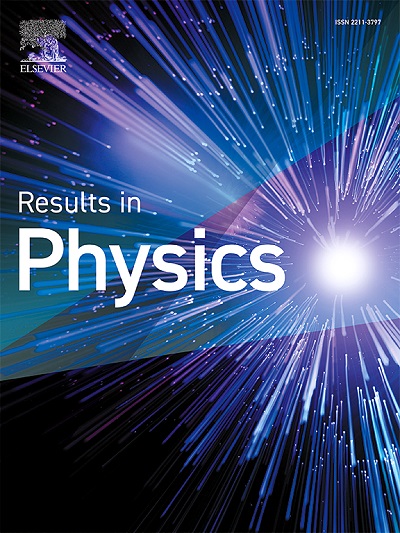Tailoring magnetic properties of FeCoBi nanowires through controlled synthesis and post-deposition treatments
IF 4.4
2区 物理与天体物理
Q2 MATERIALS SCIENCE, MULTIDISCIPLINARY
引用次数: 0
Abstract
This study presents the fabrication, crystalline identification, and magnetic characterization of iron-cobalt-bismuth (FeCoBi) nanowires, with a focus on the effects of Bi concentration, annealing, pH, and deposition frequency. FeCoBi nanowires were synthesized using template-assisted electrodeposition with varying concentrations of bismuth nitrate in the electrolyte. FeCoBi nanowires with varying Bi contents (0–10.36 wt%) were fabricated using the AC electrodeposition method within an anodic aluminum oxide (AAO) template. The results indicate that the crystal structure of FeCoBi nanowires remains bcc with a peak at 45.9° for Bi content up to 6.8 wt%, but transitions to an amorphous structure as the Bi content increases further. It was observed that the coercivity of all nanowires improved after annealing. The most significant increase was found in FeCoBi nanowires with 9 wt% Bi (0.008 M Bi+3), where the coercivity rose from 1345 Oe before annealing to 2647 Oe after annealing at 500 °C. Additionally, altering the pH of the electrodeposition solution (0.008 M Bi+3) enhanced the coercivity of FeCoBi nanowires from 1345 Oe at pH 3 to 1887 Oe at pH 6. The crystal structure of the nanowires transitioned from amorphous at pH 3 to a bcc structure at pH 6. Furthermore, increasing the electrodeposition frequency led to higher coercivity due to a reduced deposition rate and improved crystallinity. For FeCoBi nanowires (0.008 M Bi+3), the coercivity increased from 1108 Oe at 100 Hz to 1677 Oe at 800 Hz. Post-annealing of nanowires fabricated at different frequencies resulted in enhanced coercivity for all samples, with a notable 92 % improvement in coercivity observed for nanowires deposited at 600 Hz. The results demonstrate the potential of FeCoBi nanowires for applications in high-density magnetic storage and spintronic devices, where tailored magnetic properties are crucial for optimal performance.

求助全文
约1分钟内获得全文
求助全文
来源期刊

Results in Physics
MATERIALS SCIENCE, MULTIDISCIPLINARYPHYSIC-PHYSICS, MULTIDISCIPLINARY
CiteScore
8.70
自引率
9.40%
发文量
754
审稿时长
50 days
期刊介绍:
Results in Physics is an open access journal offering authors the opportunity to publish in all fundamental and interdisciplinary areas of physics, materials science, and applied physics. Papers of a theoretical, computational, and experimental nature are all welcome. Results in Physics accepts papers that are scientifically sound, technically correct and provide valuable new knowledge to the physics community. Topics such as three-dimensional flow and magnetohydrodynamics are not within the scope of Results in Physics.
Results in Physics welcomes three types of papers:
1. Full research papers
2. Microarticles: very short papers, no longer than two pages. They may consist of a single, but well-described piece of information, such as:
- Data and/or a plot plus a description
- Description of a new method or instrumentation
- Negative results
- Concept or design study
3. Letters to the Editor: Letters discussing a recent article published in Results in Physics are welcome. These are objective, constructive, or educational critiques of papers published in Results in Physics. Accepted letters will be sent to the author of the original paper for a response. Each letter and response is published together. Letters should be received within 8 weeks of the article''s publication. They should not exceed 750 words of text and 10 references.
 求助内容:
求助内容: 应助结果提醒方式:
应助结果提醒方式:


